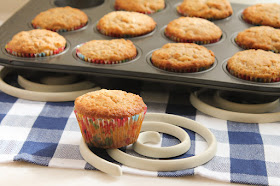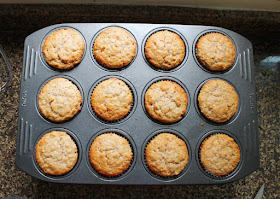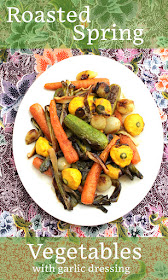Cornish Saffron Cake is a traditional bake from Cornwall, made with an enriched yeast dough, flavored with saffron and sweetened with sugar. It is generally served plain or with lashing of butter or even some clotted cream.
This month my Bundt Bakers group is being hosted by Felice of
All That’s Left Are The Crumbs. Her theme and in this case, challenge, was to bake a Bundt cake that uses yeast for leavening. I must confess that when I started scouring the internet for ideas, Cornish Saffron Cake came up after a simple search for yeast cakes.
“Excellent!” I exclaimed, making my furry sous chef jump to alertness, and wrote it down in my notebook. Just from the title, it sounded like a winner. I have saffron, some really good quality saffron, and I’m sure the good people of Cornwall would not have kept making Cornish Saffron Cake for all these centuries if it wasn’t good.
But here’s the rub. When it came time to bake and I actually started reading the (many!) recipes, it turns out that Cornish Saffron Cake isn’t really cake at all, but more of a sweet bread, with mixed dried fruit. The dough is traditionally baked into buns or in a loaf pan. So, would it qualify for the challenge?
I headed back to our Facebook group to ask and saw that someone else had just asked a question about the nature of our yeasty Bundts: Could the Bundt be savory? When Felice said “sure,” (and I saw that her own recipe title was Hot Cross Bun Bundt) I knew that my sweet bready “cake” would probably be fine as well.
I ended up slightly adapting the ingredients from this recipe on
Baking for Britain.
Ingredients
1/2 teaspoon saffron strands
1 1/4 cup or 295ml whole milk
4 cups or 500g unbleached white bread flour, plus extra for kneading
1 teaspoon fine sea salt
2/3 cup or 150g unsalted butter, cubed, plus more for baking pan
1/2 cup or 115g light muscovado sugar
1/4 oz or 7g rapid rise yeast
3/4 cup or 115g mixed dried fruit and peel
Note: Back in the old days, when sterilization was an issue, every bread recipe included the instruction to scald the milk first. I won’t go into the reasons why or explain the method because my friend, Jenni, at Pastry Chef Online has done a remarkable job with both in this
Fundamental Friday post, if you are interested. But since I was going to heat the milk to infuse the saffron, I thought, might as well scald it.
Method
Start by scalding your milk, which is to say, bringing it almost to a boil either on the stove or in the microwave. (See more precise instructions in the link above.)
Liberally butter a 12-cup Bundt pan and set aside.
Put the saffron in the milk and leave to infuse for an hour or two, or even overnight, in which case, put the milk in the refrigerator after it has cooled off so it doesn't spoil.
When you are ready to bake, warm the saffron milk up again to about 110–115°F (115°F=46°C.) Put 1/4 cup or 60ml of it in a bowl and add the yeast and a tablespoon of the sugar.
When the yeast is activated and bubbling, you can add it back into the rest of the saffron milk.
Measure your flour into the mixing bowl of your stand mixer and add the butter cubes. Use a pastry blender or your hands to mix the butter into the flour until it resembles sandy crumbs.
Stir in the sugar and salt.
Make a well in the middle of the flour/butter mixture and pour in the yeasty saffron milk.
Use the bread hook on your mixer – or indeed, your hands, but this is a wet sticky dough so if you have a mixer, that’s a good thing – to combine the milk and flour until you have soft dough.
Knead the dough for about five minutes with the mixer or 10 minutes by hand. Sprinkle on a little more flour, if necessary.
Add in the mixed fruit and peel and keep kneading until it’s all incorporated.
Roll your dough into a fat log and fit it into your buttered Bundt pan, overlapping the ends. Cover lightly with cling film and set in a warm place to rise for about an hour.
After one hour, start preheating your oven to 350°F or 180°. Once the oven has reached temperature, put the Cornish Saffron Cake into the oven and bake for about 50-60 minutes, until the outside is golden and it sounds hollow when tapped. If it looks like it’s browning too quickly, you can cover the top with foil.
Remove from the oven and allow to rest for a few minutes before turning it out onto a wire rack to cool.
Cool almost completely before slicing with a serrated knife to serve. It’s perfect just ever so slightly warm so butter will melt into it.
Enjoy!
Many thanks to Felice for this great challenge. My favorite part of these baking groups is the opportunity to explore unfamiliar cuisines and recipes to fit a theme. I’ll definitely be making Cornish Saffron Cake again. It's superb with a cup of hot coffee or tea!
Special thanks also to Wendy from
A Day in the Life on the Farm for creating our updated link list!
Check out all the other yeasty Bundts we’ve baked for you today.
#BundtBakers is a group of Bundt loving bakers who get together once a month to bake Bundts with a common ingredient or theme. Follow our Pinterest board
right here. Links are also updated each month on the BundtBakers
home page.
Pin it!
.






















































